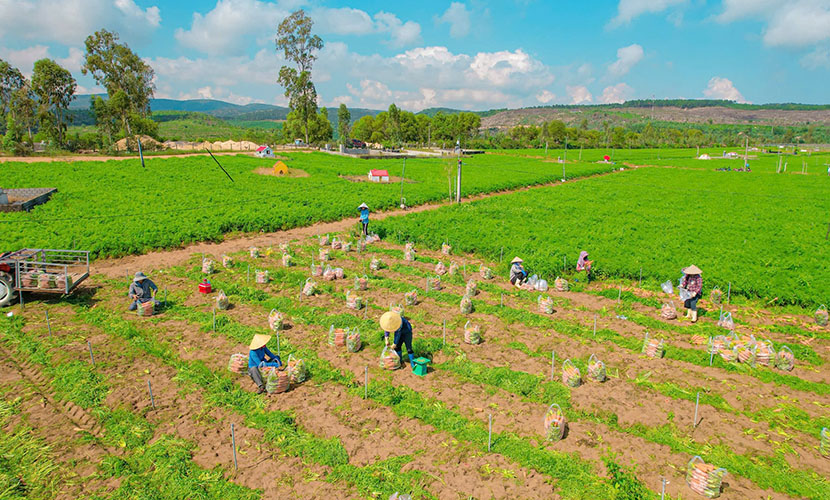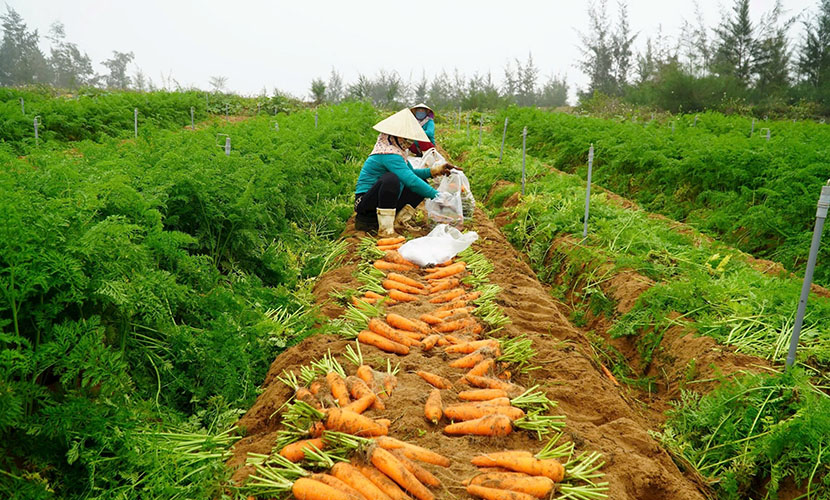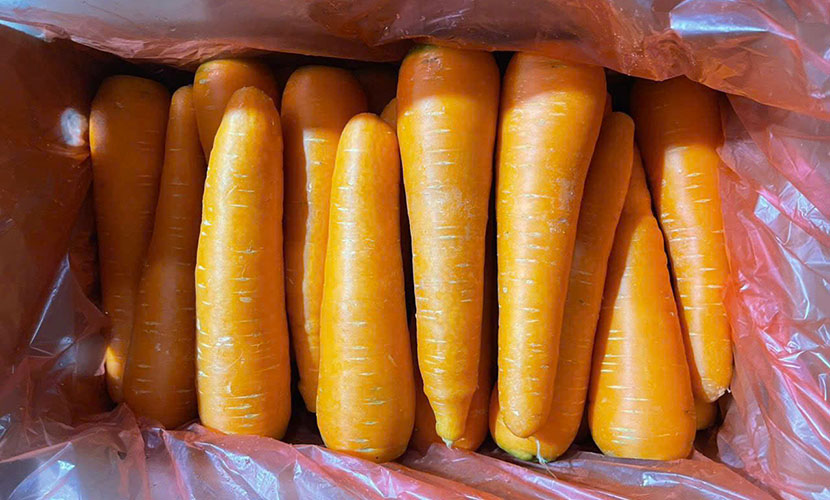
Due to recent floods and heavy rains, many regions growing carrots across the country has sufferred crop losses. However, farmers in the coastal area of Hoang Mai town, are entering the harvest season of Vietnam’s carrot farms. They are happy with good prices and significant income.
Hoang Mai town used to be sandy coastal land, which affected by salinity, making it difficult for many vegetables to grow. Almost no households in the commune engaged in agriculture, only a few small home gardens cultivated some vegetables. As a result, farmers have left the large areas of land with weeds for a long time.

Vietnam’s carrot farms
Mr. Chuong is one of the pioneering farmers planting Vietnam’s carrot farms on the sandy soil. He shared: “Looking at this vast land without any valuable vegetables, I regretted leaving it unused. Therefore, I and some other households decided to green the land with vegetable crops. We mainly grow muskmelons and watermelons in the summer, and winter-spring carrots.”
Farmers have planted a Japanese carrot variety known for many advantages. The leaves spread evenly, and the leaf layers are not thick. The roots are shorter but thicker in diameter, with a sweet fragrance and bright red color.
There are three planting seasons of Vietnam’s carrot farms. The first season lasts from July to November. The main season begins in October and finishes in February. The third season lasts from December to May.

Harvesting Vietnamese carrots
Sharing about carrot cultivation techniques on saline sandy soil, Mr. Ninh, another farmer, said: “Soil preparation is the most important, using only organic fertilizers. The sandy soil here is very loose and drains well, so during the recent floods, the entire early carrot area faced no problems. For pest and disease control: common pests include cutworms, loopers, aphids, and diseases like leaf spot, soft rot, and leaf scorch.”
To ensure good carrot growth, Mr. Ninh regularly inspects the fields to detect pests early and applies control measures. Pesticides are only used when necessary to minimize chemical use and ensure proper withdrawal periods before harvest.
Usually, early-season carrots fetch higher prices than the main season, so all seven hectares here were planted early. With an automatic irrigation system and machinery for land preparation, labor costs have been significantly reduced. Thanks to applying science and technology in production, early crop yields reach 1.5–2 tons per 360 m² (one sào).

Vietnamese carrot exports
This year, northern provinces growing carrots suffered heavy flood damage, causing scarcity in carrot supply. Therefore, traders come directly to Hoang Mai town to buy and pre-order the harvest. With the current selling price of 13,000 VND/kg, seven hectares of carrots expected to yield over 200 tons will certainly bring substantial income to farmers.
In this winter season, Hoang Mai town plans to plant over 1,100 hectares of various crops, including more than 110 hectares of carrots, mainly in Quynh Lien and Quynh Lap communes. However, only the early carrots in Quynh Lap are ready for harvest due to its higher, well-drained terrain unaffected by recent floods. Other areas in Quynh Lien will need about another month before harvesting.
Vietnamese source: https://baonghean.vn/nong-dan-mien-bien-nghe-an-thu-hoach-ca-rot-vu-som-nang-suat-cao-10285126.html
